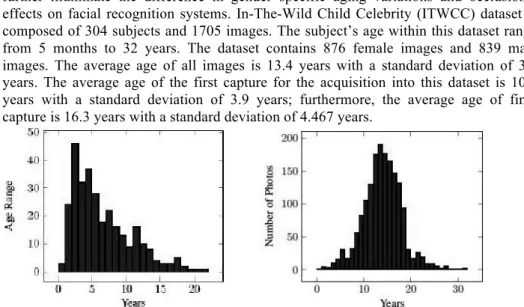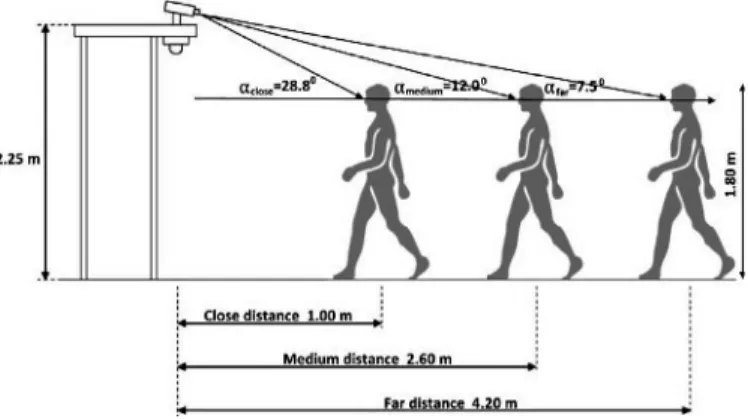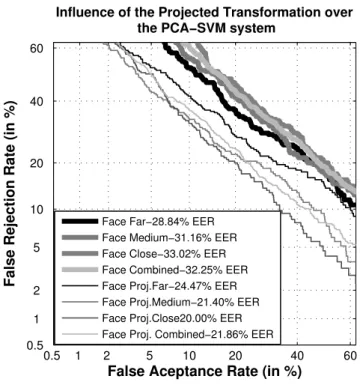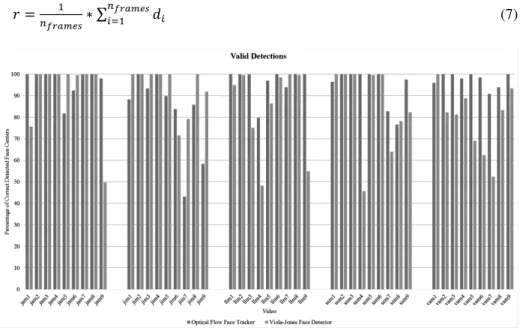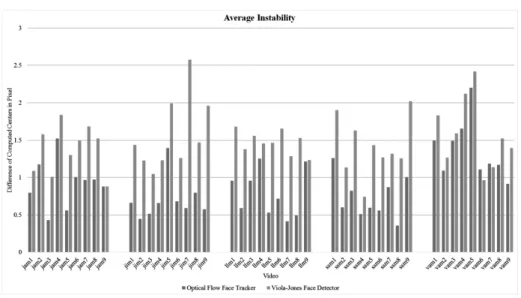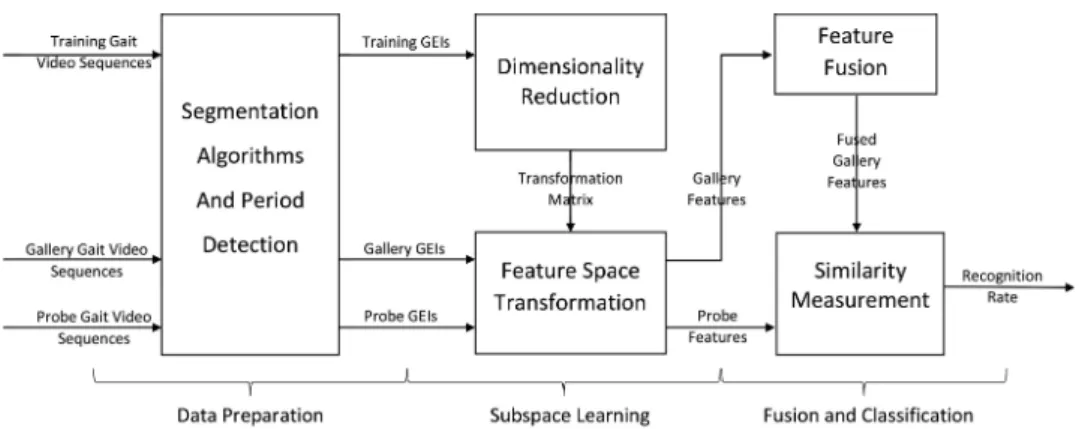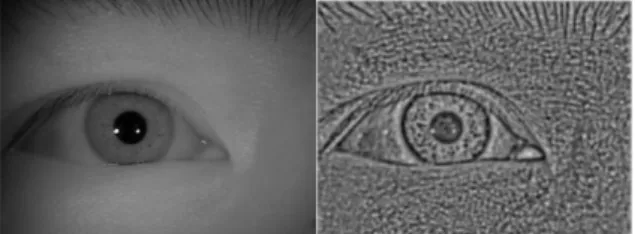The proceedings of the BIOSIG 2015 include scientific contributions of the annual conference of the Biometrics Special Interest Group (BIOSIG) of the Gesellschaft für Informatik (GI). The conference took place in Darmstadt, 09.- 11. September 2015. The advances of biometrics research and new develop- ments in the core biometric application field of security have been presented and discussed by international biometrics and security professionals.
ISSN 1617-5468
ISBN 978-3-88579-639-8
Gesellschaft für Informatik e.V. (GI)
publishes this series in order to make available to a broad public recent findings in informatics (i.e. computer science and informa- tion systems), to document conferences that are organized in co- operation with GI and to publish the annual GI Award dissertation.
Broken down into
• seminars
• proceedings
• dissertations
• thematics
current topics are dealt with from the vantage point of research and development, teaching and further training in theory and practice.
The Editorial Committee uses an intensive review process in order to ensure high quality contributions.
The volumes are published in German or English.
Information: http://www.gi.de/service/publikationen/lni/
245
GI-Edition
Lecture Notes in Informatics
Arslan Brömme, Christoph Busch , Christian Rathgeb, Andreas Uhl (Eds.)
BIOSIG 2015
Proceedings of the 14 th International Conference of the Biometrics
Special Interest Group
09.–11. September 2015 Darmstadt, Germany
Proceedings
Ar slan Brömme, Chr istoph Busc h, Chr istian Rathg eb, Andr eas Uhl (Eds.): BIOSIG 2015 - 14
thInter national Conf er ence of the Biometr ics Special Inter est Gr oup
Arslan Brömme, Christoph Busch, Christian Rathgeb, Andreas Uhl (Eds.)
BIOSIG 2015
Proceedings of the 14 th International Conference of the Biometrics Special Interest Group
09.-11. September 2015 in Darmstadt, Germany
Gesellschaft für Informatik e.V. (GI)
Lecture Notes in Informatics (LNI) - Proceedings Series of the Gesellschaft für Informatik (GI) Volume P-245
ISBN 978-3-88579-639-8 ISSN 1617-5468
Volume Editors Arslan Brömme
GI BIOSIG, Gesellschaft für Informatik e.V.
Ahrstraße 45, D-53175 Bonn
Email: arslan.broemme@aviomatik.de
Christoph Busch
Hochschule Darmstadt, CASED Haardtring 100, D-64295 Darmstadt Email: christoph.busch@h-da.de Christian Rathgeb
Hochschule Darmstadt, CASED Haardtring 100, D-64295 Darmstadt Email: christian.rathgeb@h-da.de
Andreas Uhl
University of Salzburg,
Jakob-Haringer Str. 2, A-5020 Salzburg Email: uhl@cosy.sbg.ac.at
Series Editorial Board
Heinrich C. Mayr, Alpen-Adria-Universität Klagenfurt, Austria (Chairman, mayr@ifit.uni-klu.ac.at)
Dieter Fellner, Technische Universität Darmstadt, Germany Ulrich Flegel, Hochschule für Technik, Stuttgart, Germany Ulrich Frank, Universität Duisburg-Essen, Germany
Johann-Christoph Freytag, Humboldt-Universität zu Berlin, Germany Michael Goedicke, Universität Duisburg-Essen, Germany
Ralf Hofestädt, Universität Bielefeld, Germany
Michael Koch, Universität der Bundeswehr München, Germany Axel Lehmann, Universität der Bundeswehr München, Germany Peter Sanders, Karlsruher Institut für Technologie (KIT), Germany Sigrid Schubert, Universität Siegen, Germany
Ingo Timm, Universität Trier, Germany
Karin Vosseberg, Hochschule Bremerhaven, Germany Maria Wimmer, Universität Koblenz-Landau, Germany Dissertations
Steffen Hölldobler, Technische Universität Dresden, Germany Seminars
Reinhard Wilhelm, Universität des Saarlandes, Germany Thematics
Andreas Oberweis, Karlsruher Institut für Technologie (KIT), Germany
Gesellschaft für Informatik, Bonn 2015
printed by Köllen Druck+Verlag GmbH, Bonn
Chairs’ Message
Welcome to the annual international conference of the Biometrics Special Interest Group (BIOSIG) of the Gesellschaft für Informatik (GI) e.V.
GI BIOSIG was founded in 2002 as an experts’ group for the topics of biometric person identification/authentication and electronic signatures and its applications. Over more than a decade the annual conference in strong partnership with the Competence Center for Applied Security Technology (CAST) established a well known forum for biometrics and security professionals from industry, science, representatives of the national gov- ernmental bodies and European institutions who are working in these areas.
The BIOSIG 2015 international conference is jointly organized by the Biometrics Spe- cial Interest Group (BIOSIG) of the Gesellschaft für Informatik e.V., the Competence Center for Applied Security Technology e.V. (CAST), the German Federal Office for Information Security (BSI), the European Association for Biometrics (EAB), the ICT COST Action IC1106, the European Commission Joint Research Centre (JRC), the Tel- eTrusT Deutschland e.V. (TeleTrusT), the Norwegian Biometrics Laboratory (NBL), the Center for Advanced Security Research Darmstadt (CASED), and the Fraunhofer Insti- tute for Computer Graphics Research (IGD). This years’ international conference BIOSIG 2015 is again technically co-sponsored by the Institute of Electrical and Elec- tronics Engineers (IEEE) and is enriched with satellite workshops by the TeleTrust Bio- metric Working Group and the European Association for Biometrics.
The international program committee accepted full scientific papers strongly according to the LNI guidelines (acceptance rate ~22%) within a scientific double-blinded review process of at minimum five reviews per paper. All papers were formally restricted for the printed proceedings to 12 pages for regular research contributions including an oral presentation and 8 pages for further conference contributions including a poster presen- tation at the conference site.
Furthermore, the program committee has created a program including selected contribu- tions of strong interest (further conference contributions) for the outlined scope of this conference. All paper contributions for BIOSIG 2015 will be published additionally in the IEEE Xplore Digital Library.
We would like to thank all authors for their contributions and the numerous reviewers for their work in the program committee.
Darmstadt, 09 th September 2015
Arslan Brömme GI BIOSIG, GI e.V.
Christoph Busch Hochschule Darmstadt
Christian Rathgeb Hochschule Darmstadt
Andreas Uhl
University of
Salzburg
Chairs
Arslan Brömme, GI BIOSIG, GI e.V., Bonn, Germany Christoph Busch, Hochschule Darmstadt - CASED, Germany Christian Rathgeb, Hochschule Darmstadt - CASED, Germany Andreas Uhl, University of Salzburg, Austria
Program Committee Harald Baier (CASED, DE) Oliver Bausinger (BSI, DE) Thiriamchos Bourlai (WVU, US) Patrick Bours (GUC, NO)
Sebastien Brangoulo (Morpho, FR) Ralph Breithaupt (BSI, DE) Julien Bringer (Morpho, FR) Arslan Brömme (GI/BIOSIG, DE) Christoph Busch (CAST-Forum, DE) Victor-Philipp Busch (Sybuca, DE) Patrizio Campisi (Uni Roma 3, IT) Nathan Clarke (CSCAN, UK) Paul Lobato Correira (LXIT, PT) Adam Czajka (NASK,PL) Farzin Deravi (UKE, UK) Martin Drahansky (BUT, CZ) Andrzej Drygajlo (EPFL, CH) Julian Fierrez (UAM, ES)
Simone Fischer-Hübner (KAU, SE) Lothar Fritsch (NR, NO)
Steven Furnell (CSCAN, UK) Sonia Garcia (TSP, FR) Patrick Grother (NIST, US) Olaf Henniger (Fhg IGD, DE) Detlef Hühnlein (ecsec, DE) Robert W. Ives (USNA, US) Christiane Kaplan (softpro, DE) Stefan Katzenbeisser (CASED, DE) Tom Kevenaar (GenKey, NL)
Didier Meuwly (NFI, NL) Emilio Mordini (CSSC, IT) Elaine Newton (NIST, US) Mark Nixon (UoS, UK)
Alexander Nouak (Fhg IGD, DE) Markus Nuppeney (BSI, DE) Hisao Ogata (Hitachi, JP) Martin Olsen (GUC, NO) Javier Ortega-Garcia (UAM, ES) Michael Peirce (Daon, IR) Dijana Petrovska (TSP, FR) Anika Pflug (CASED, DE) Ioannis Pitas (AUT, GR) Fernando Podio (NIST, US) Raghu Ramachandra (GUC, NO) Kai Rannenberg (Uni FFM, DE) Christian Rathgeb (CASED, DE) Arun Ross (MSU, US)
Heiko Roßnagel (Fhg IAO, DE)
Raul Sanchez-Reillo (UC3M, ES)
Stephanie Schuckers (ClU, US)
Günter Schumacher (JRC, IT)
Takashi Shinzaki (Fujitsu, JP)
Max Snijder (EAB, NL)
Luis Soares (ISCTE-IUL, PT)
Luuk Spreeuwers (UTW, NL)
Elham Tabassi (NIST, US)
Tieniu Tan (NLPR, CN)
Massimo Tistarelli (UNISS, IT)
Ulrike Korte (BSI, DE) Bernd Kowalski (BSI, DE) Ajay Kumar (Poly, HK) Herbert Leitold (a-sit, AT) Guoqiang Li (GUC, NO) Stan Li (CBSR, CN)
Paulo Lobato Correira (IST, PT) Davide Maltoni (UBO, IT) Johannes Merkle (secunet, DE)
Dimitrios Tzovaras (CfRaT, GR) Andreas Uhl (COSY, AT) Markus Ullmann (BSI, DE) Raymond Veldhuis (UTW, NL) Anne Wang (Cogent, US) Jim Wayman (SJSU, US) Peter Wild (UoR, UK) Andreas Wolf (BDR, DE) Bian Yang (GUC, NO)
Hosts
Biometrics Special Interest Group (BIOSIG) of the Gesellschaft für Informatik (GI) e.V.
http://www.biosig.org
Competence Center for Applied Security Technology e.V. (CAST) http://www.cast-forum.de
Bundesamt für Sicherheit in der Informationstechnik (BSI) http://www.bsi.bund.de
European Association for Biometrics (EAB) http://www.eab.org
European Commission Joint Research Centre (JRC) http://ec.europa.eu/dgs/jrc/index.cfm
TeleTrusT Deutschland e.V (TeleTrust) http://www.teletrust.de
Norwegian Biometrics Laboratory (NBL) http://www.nislab.no/biometrics_lab
Center for Advanced Security Research Darmstadt (CASED) http://www.cased.de
Fraunhofer-Institut für Graphische Datenverarbeitung (IGD)
http://www.igd.fraunhofer.de
BIOSIG 2015 – Biometrics Special Interest Group
“2015 International Conference of the Biometrics Special Interest Group”
09 th -11 th September 2015
Biometrics provides efficient and reliable solutions to recognize individuals. With in- creasing number of identity theft and misuse incidents we do observe a significant fraud in e-commerce and thus growing interests on trustworthiness of person authentication.
Nowadays we find biometric applications in areas like border control, national ID cards, e-banking, e-commerce, e-health etc. Large-scale applications such as the European Union Visa Information System (VIS) and Unique Identification (UID) in India require high accuracy and also reliability, interoperability, scalability, system reliability and usability. Many of these are joint requirements also for forensic applications.
Multimodal biometrics combined with fusion techniques can improve recognition per- formance. Efficient searching or indexing methods can accelerate identification effi- ciency. Additionally, quality of captured biometric samples can strongly influence the performance.
Moreover, mobile biometrics is an emerging area and biometrics based smartphones can support deployment and acceptance of biometric systems. However concerns about secu- rity and privacy cannot be neglected. The relevant techniques in the area of presentation attack detection (liveness detection) and template protection are about to supplement biometric systems, in order to improve fake resistance, prevent potential attacks such as cross matching, identity theft etc.
BIOSIG 2015 offers you once again a platform for international experts’ discussions on
biometrics research and the full range of security applications.
Table of Contents
BIOSIG 2015 – Regular Research Papers ……….…... 13 Karl Ricanek Jr., Shivani Bhardwaj, Michael Sodomsky
A Review of Face Recognition against Longitudinal Child Faces………...
Ester Gonzalez-Sosa, Ruben Vera-Rodriguez, Julian Fierrez, Pedro Tome, Javier Ortega-Garcia
Pose Variability Compensation Using Projective Transformation Forensic Face Recognition………..………..…………...……….…...
Andreas Ranftl, Fernando Alonso-Fernandez, Stefan Karlsson
Face Tracking using Optical Flow Development of a Real-Time AdaBoost Cascade Face Tracker……….………...
Ning Jia, Victor Sanchez, Chang-Tsun Li, Hassan Mansour
On Reducing the Effect of Silhouette Quality on Individual Gait Recognition:
a Feature Fusion Approach………...………...
Peter Wild, Heinz Hofbauer, James Ferryman, Andreas Uhl
Segmentation-level Fusion for Iris Recogntion……….…...
Michael Happold
Structured Forest Edge Detectors for Improved Eyelid and Iris Segmentation..…...
Martin Aastrup Olsen, Martin Böckeler, Christoph Busch
Predicting Dactyloscopic Examiner Fingerprint Image Quality Assessments...…...
Johannes Kotzerke, Stephen A. Davis, Robert Hayes, Luuk J. Spreeuwers, Raymond N.J. Veldhuis, Kathy J. Horadam
Identification performance of evidential value estimation for fingermarks...…...
Jesse Hartloff, Avradip Mandal, Arnab Roy
Privacy Preserving Technique for Set-Based Biometric Authentication using Reed-Solomon Decoding……….………...…...
Benjamin Tams, Johannes Merkle, Christian Rathgeb, Johannes Wagner, Ulrike Korte, Christoph Busch
Improved Fuzzy Vault Scheme for Alignment-Free Fingerprint Features……...…...
Edlira Martiri, Bian Yang, Christoph Busch
Protected Honey Face Templates……….……...…...
Alexandre Sierro, Pierre Ferrez, Pierre Roduit
Contact-less Palm/Finger Vein Biometric………...…...
15
27
39
49
61
73
85
97
109
121
133
145
Guoqiang Li, Bian Yang, Christoph Busch
A Fingerprint Indexing Scheme with Robustness against Sample Translation and Rotation………..…...…...
Kribashnee Dorasamy, Leandra Webb, Jules Tapamo
Evaluating the Change in Fingerprint Directional Patterns under Variation of Rotation and Number of Regions.……….………....
BIOSIG 2015 – Further Conference Contributions………
Christof Kauba, Andreas Uhl
Robustness Evaluation of Hand Vein Recognition Systems………...…...
Nahuel González, Enrique P. Calot
Finite Context Modeling of Keystroke Dynamics in Free Text...…...
Heinz Hofbauer, Christian Rathgeb, Johannes Wagner, Andreas Uhl, Christoph Busch
Investigation of Better Portable Graphics Compression for Iris Biometric
Recognition………...…...
Nalla Pattabhi Ramaiah, Nalla Srilatha, Chalavadi Krishna Mohan
Sparsity-based Iris Classification using Iris Fiber Structures ………...…...
Pedro Tome and Sébastien Marcel
Palm Vein Database and Experimental Framework for Reproducible Research...
Michael Fairhurst, Meryem Erbilek, Marjory Da Costa-Abreu
Exploring Gender Prediction from Iris Biometrics………...
Dominik Klein, Jan Kruse
A Comparative Study on Image Hashing for Document Authentication…………...
Alaa Darabseh, Akbar Siami Namin
On Accuracy of Keystroke Authentications Based on Commonly Used English Words…………...
Christof Jonietz, Eduardo Monari, Chengchao Qu
Towards Touchless Palm and Finger Detection for Fingerprint Extraction with Mobile Devices………...
Naser Damer, Alexander Nouak
Weighted Integration of Neighbors Distance Ratio in Multi-biometric Fusion...
157
169
181
183
191
199
207
215
223
231
239
247
255
Soumik Mondal, Patrick Bours
Does Context matter for the Performance of Continuous Authentication Biometric Systems? An Empirical Study on Mobile Devices...
Thomas Klir
Fingerprint Image Enhancement with easy to use algorithms…….…………...
Lisa de Wilde, Luuk Spreeuwers, Raymond Veldhuis
Exploring How User Routine Affects the Recognition Performance of a Lock Pattern……….………...
Thomas Herzog, Andreas Uhl
JPEG Optimisation for Fingerprint Recognition: Generalisation Potential of an Evolutionary Approach ………..……….………...
Nassima Kihal, Arnaud Polette, Salim Chitroub, Isabelle Brunette, Jean Meunier
Corneal Topography: An Emerging Biometric System for Person Authentication....
Rig Das, Emanuele Maiorana, Daria La Rocca, Patrizio Campisi
EEG Biometrics for User Recognition using Visually Evoked Potentials…………....
Maximilian Krieg, Nils Rogmann
Liveness Detectionin Biometrics……….…………...
M. Hamed Izadi, Andrzej Drygajlo
Discarding low quality Minutia Cylinder-Code pairs for improved fingerprint comparison……….……….…………...
Christian Kahindo, Sonia Garcia-Salicetti, Nesma Houmani
A Signature Complexity Measure to select Reference Signatures for Online Signature Verification………..……….…………...
263
271
279
287
295
303
311
319
327
BIOSIG 2015
Regular Research Papers
A Review of Face Recognition against Longitudinal Child Faces
Karl Ricanek Jr., Ph.D. Senior Member IEEE, Shivani Bhardwaj, & Michael Sodomsky I3S Institute – Face Aging Group
University of North Carolina Wilmington 601 South College Road
28403 Wilmington ricanekk@uncw.edu
sb2534@uncw.edu
Abstract: It is an established fact that the face-based biometric system performance is affected by the variation that is caused as a result of aging;
however, the question has not been adequately investigated for non-adults, i.e.
children from birth to adulthood. The majority of research and development in automated face recognition has been focused on adults. The objective of this paper is to establish an understanding of face recognition against non-adults. This work develops a publicly available longitudinal child face database of child celebrities from images in the wild (ITWCC). This work explores the challenges of biological changes due to maturation, i.e. the face grows longer and wider, the nose expands, the lips widen, etc, i.e. craniofacial morphology, and examines the impact on face recognition. The systems chosen are: Cognitec’s FaceVacs 8.3, Open Source Biometric Recognition (SF4), principal component analysis (PCA), linear discriminant analysis (LDA), local region principal component analysis (LRPCA), and cohort linear discriminant analysis. Face matchers recorded low performance:
top performance in verification is 37% TAR at 1% FAR and best rank-1 identification reached 25% recognition rate on a gallery of 301 subjects.
1. Introduction
The human face is an important feature of identity recognition. The characteristics of the
face that makes it a desirable biometric modality is its uniqueness, universality,
acceptability, semi-permanence, and easy collectability [RB11]. Because of its potential
and possible variety of application, automated face recognition has received a lot of
attention over the last two decades. Face recognition can be accomplished from a
distance and via non-contact acquisition, which offer an added advantage over most
biometric systems and make it more suitable for security and surveillance systems. Face
recognition, may play a vital role in identifying children that go missing and in extensive
range of access control and monitoring systems, especially to safeguard children. This
technology can provide a whole new approach to protect and support latched-key kid
and to provide access control for various internet of things across different age groups. It
can be used to protect the non-adult population from predators and illegitimate web
contents.
Face recognition is a challenging problem, and a great deal of work has been completed for pose correction, illumination variation, and expression to support face recognition in the wild. However, the majority of the work done has been focused on adults and deals with the dynamics of mature faces. The objective of this paper is to review the current state of facial recognition algorithms with a focus on non-adult stages of growth and development, 2 years to 16 years.
Aging with respect to facial recognition system includes variation in shape, size and texture of the face. These temporal changes will cause performance degradation. Hence, state issued id’s, e.g. driving license, has to be renewed every 5-10 years. Mathew Turk stated that “developing a computational model of face recognition is quite difficult, because faces are complex, multidimensional, and meaningful visual stimuli” [TP91];
however, when aging information is added to this problem, it becomes infinitely more difficult. The most challenging problem in developing a solution for childhood face recognition is the formation of a useful dataset. This work addresses this primary concern.
Contributions
This paper provides the following contribution to the research community: 1. provides the baseline for face recognition performance for children against a suite of traditional face recognition techniques and investigate the impact of well-defined structural (skeletal) changes of the face on a suite of FR techniques; 2. establishes the first moderate scale publicly available child face database focused across the growth and development period1, which is one of the key issue in evaluation; and, 3. provides a methodology framework for investigating the problem of face recognition across childhood.
2. Background
Facial recognition is a complex topic that has been researched very heavily and many attempts have been made to understand the effects aging has on facial recognition systems. However, algorithm performance with respect to human aging: as a subject of the growth and development phase of childhood, has just begun to be fully explored by researchers. One of the biggest issues is the vast amount of data that is required to fully understand the human face and its maturation process. As the face changes over time, the ability to recognize the person becomes more challenging. This is further exacerbated if the person under inspection is not known to the observer.
Anthropological and forensic studies have contributed significantly to show that age related changes of non-adults are different from face aging for adults. Human aging can be studied as a two staged process: first involves the growth and development phase and
1
